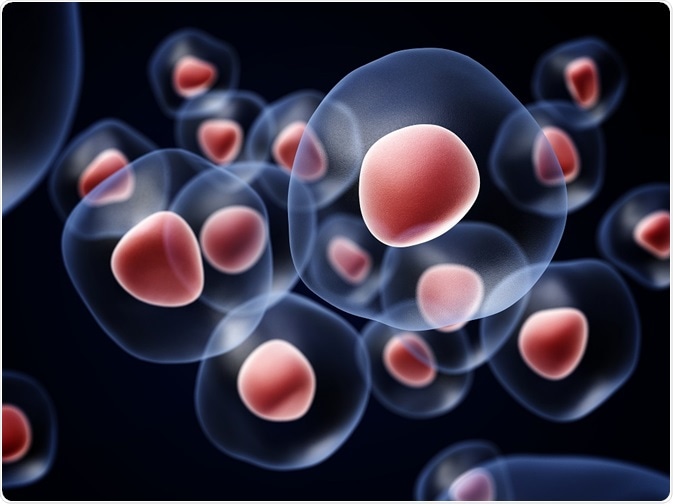Exosomes are vesicles, or cellular components, that exist outside of a cell. They are generally understood as having been released from cells upon fusion with an intermediate endocytic compartment, or a multivesicular body (MVB).

Credit: dreamerb/Shutterstock.com
When the MVB fuses with the plasma membrane surrounding the cell, intraluminal vesicles are released into the extracellular matrix and become exosomes. Other types of vesicles found outside of cells include apoptotic bodies and ectosomes. These are distinct types of vesicles from the exosome.
History of exosomes
Extracellular vesicles were first identified~50 years ago, and were assumed to be waste products of the cell. In 1983, studies on the loss of transferrin during maturation of reticulocytes into erythrocytes led to the characterization of the exosome.
For the first time, the observation was made that MVBs can produce intraluminal vesicles (ILVs) that are then released into the extracellular space through fusion with the plasma membrane. ILVs were subsequently named exosomes.
Formation of exosomes
Exosomes derive from ILVs, but the process of formation of ILVs is not yet fully understood. There are two mechanisms believed to lead to the formation of ILVs. One is based on endosomal sorting complexes required for transport (ESCRT) machinery, which is comprised of cytosolic protein complexes recruited to endosomes.
The ESCRT machinery forms a cluster of proteins on the endosome, inducing curvature of the membrane to form ILVs. However, ILVs also form in the absence of ESCRTs, through the action of tetraspanin CD63. That mechanism has not yet been characterized.
Which cells release exosome?
Not all cells have endomembrane systems, and therefore not all are able to release exosomes. B cells, dendritic cells, and mast cells release exosomes regularly as part of their normal processes. These cells can also be stimulated to release exosomes by interactions with other cells.
Purpose of exosomes
The ultimate destiny of exosomes may be to be engulfed by an acceptor cell, or they may trigger the intended physiological response without being taken up by an acceptor cell. Acceptor cells can take up exosomes by phagocytosis or endocytosis, depending on the size of the vesicle or its cargo.
Exosomes are thought to be a form of communication between cells and transmission of molecules. Recent studies have shown that exosomes have a role in the movement of proteins, lipids, and nucleic acids contributing to disease.
They also may be useful as vectors for drugs because they are made of natural cell membranes, rather than synthetic polymers, and would be tolerated better by the host. One study showed that exosomes can carry MHC-peptide complexes recognized by T lymphocytes. Secretion of those exosomes could promote antitumor immune responses.
Exosomes and disease
Exosomes have been shown to act as vehicles for disease. They may contain cargos such as:
- amyloid β: a neurodegenerative-associated peptide linked to Alzheimer’s disease
- tau: a protein associated with a number of neurodegenerative diseases
- prions: causative agent in spongiform encephalopathies
- alpha-synuclein: implicated in Parkinson’s disease and related illnesses
- superoxide dismutase 1: implicated in amyotrophic lateral sclerosis (ALS)
Avenues for further study
Exosomes and their role in the body are poorly understood. Much remains to be learned about the biological significance of exosomes and their role in disease. Better criteria are needed for distinguishing exosomes from other types of vesicles to avoid confusion as these questions are explored.
Further Reading
Last Updated: Feb 26, 2019